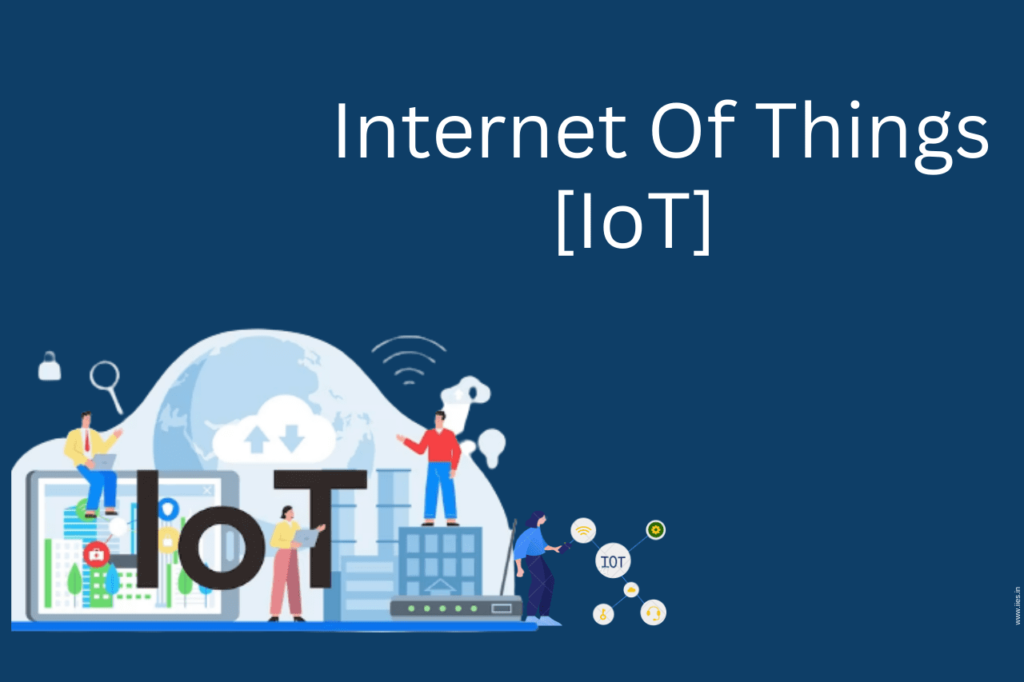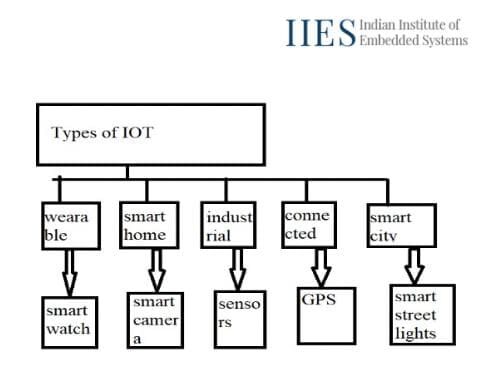Advance your skills in system programming, embedded systems, and IoT application development with our Internet of Things (IoT) Crash Course. This program is designed to help learners gain practical knowledge of IoT devices, connectivity, and embedded programming while building real-world projects.
The IoT programming language is vital due to its efficiency, portability, and compatibility across hardware platforms. It also serves as a strong foundation for mastering advanced embedded and automation technologies.
This embedded systems course in Bangalore provides a structured, hands-on approach from IoT concepts to practical implementation.
This module is part of the PG Diploma in Internet of Things – IoT

Prerequisite: Basic understanding of IoT or embedded programming
The Internet of Things (IoT) connects physical devices like sensors, actuators, and appliances to the internet, enabling them to collect, share, and analyse data autonomously. This connectivity allows seamless monitoring and control of devices from anywhere in the world.
IoT is transforming industries such as healthcare, agriculture, transportation, manufacturing, and smart cities by improving operational efficiency and enabling data-driven decision-making.
However, IoT implementation also requires addressing challenges such as data security, privacy, and interoperability. With advancements in AI, edge computing, and embedded systems, IoT continues to shape the future of intelligent automation and connected technologies.
User Interface: Provides real-time visualizations and control options for users.

An open-source microcontroller board ideal for IoT prototyping. It supports both analog and digital I/O pins and can be easily programmed using the Arduino IDE. Arduino projects include automation systems, smart gadgets, and sensor-based solutions.
NodeMCU is a Wi-Fi-enabled system-on-chip (SoC) based on the ESP8266 module. It’s ideal for wireless IoT projects that require connectivity and low power consumption. Similar to Arduino, it can be programmed using the Arduino IDE but offers more advanced features for cloud-based IoT applications.
By completing this IoT crash course, you will be able to:
This embedded course in Bangalore helps learners gain practical experience while working on real-world IoT projects, building both confidence and technical expertise.
After completing the course, learners can explore roles such as:
As India moves toward smart manufacturing, electric mobility, and connected infrastructure, skilled IoT professionals are in high demand across Bangalore, Pune, Hyderabad, and Chennai.
IIES offers one of the best embedded and IoT courses in Bangalore, combining expert mentorship, hands-on learning, and industry-level projects. The curriculum focuses on practical exposure, helping students build real-time IoT systems and enhance their career prospects in embedded and automation domains.
Absolutely! While a technical background can be advantageous when learning IoT, it is not an absolute requirement. IoT encompasses a wide range of skills and knowledge, including electronics, programming, networking, and data analytics. As a non-technical background learner, you can start by gaining a foundational understanding of these concepts through online courses, workshops, or tutorials. With dedication and persistence, you can learn the necessary skills and gradually build your expertise in IoT. Focus on acquiring practical skills, exploring hands-on projects, and collaborating with others in the field. Networking with professionals, attending IoT events, and participating in online communities can also provide valuable insights and guidance. With a strong learning mindset and an eagerness to explore, you can successfully embark on a career in IoT, regardless of your technical background.
As a fresher, there are many exciting career opportunities in the growing field of IoT. You could work as an IoT developer designing sensors, devices, and software for connected products1. There are also roles in IoT networking and security, setting up and managing the infrastructure that connects IoT devices1. You could work as an IoT consultant, helping businesses implement IoT solutions1. There are also opportunities in IoT data analytics and machine learning, using data from connected devices to gain insights and optimize processes1. As IoT continues to expand into more industries and applications, new roles and specializations will emerge for professionals with the right skills and experience1. With the right training and experience, you can carve out a niche for yourself in this booming sector as an IoT engineer, architect, specialist, or expert1. The possibilities are vast as more and more everyday objects become connected to the internet1.
Software Defined Network (SDN) is the most recent development in network management. It facilitates network management by unifying the control plane and data plane, with the data plane utilizing the forwarding tables created by the controller to forward messages, known as Web-packets.
Software Defined Network (SDN) is the most recent development in network management. It facilitates network management by unifying the control plane and data plane, with the data plane utilizing the forwarding tables created by the controller to forward messages, known as Web-packets.
SD-WAN is a software-defined wide area network (WAN) architecture that simplifies the IT infrastructure for controlling, managing, and exchanging data. This virtual WAN architecture creates a secure connection between users and their applications. To put it another way, it is an emerging technology that creates an overlay network for the WAN that replaces the traditional branch routers, thus streamlining the WAN infrastructure.
M2m stands for machine-machine IoT. Machine-to-Machine (M2M) connectivity offers fast, reliable internet access from anywhere at any time. It operates both indoors and outdoors. Multiple M2M gateway connections connect M2M devices to a network domain. Personal Area Network (PAN) and Local Area Network (LAN) technologies are two of the M2M areas of service. Sensors, Radio Frequency Identification (RFID), Wi-Fi (Wi-Fi) or cellular communications lines, and Autonomic Computing Software (ACS) configured to help a network are the essential components of an M2M network. device in interpreting data and making decisions. This M2M application translates the data into a pre-programmed set of automated actions. The primary purpose of the sensor data is to be transmitted to a network.
AWS-amazon web services. Amazon Web Services (AWS) IoT is the cloud service that links your IoT devices together with other devices and the AWS cloud. AWS IoT has device software that helps you get your IoT devices integrated into the AWS cloud. If your IoT devices can link up with AWS IoT, then AWS IoT can link them up with the cloud services AWS provides. Cloud services are services that store and process large amounts of data that are connected to the Internet. AWS IoT is one example of a cloud service that connects IoT devices to the cloud.
IoT is a rapidly developing technology that allows users to interact with other devices remotely. Utilizing IoT technology with a Raspberry Pi allows for convenient and cost-effective access to other devices remotely, which is highly beneficial. The Raspberry Pi is a powerful controller that can be used for a variety of applications, such as intelligent energy monitoring, intelligent home appliances, and face recognition systems for door lock systems.
The Blynk framework is an open-source platform for iOS and Android smartphones that enables them to control hardware via the Internet, such as Arduinos, Raspberry Pis, and NodeMCUs. This platform is designed to facilitate the creation of graphical interfaces or human-machine interfaces (HMI), which are compiled and provided to the corresponding address on the widgets available. Blynk is capable of controlling hardware remotely, displaying sensor data, storing data, and visualizing it, among other features. The platform is composed of three main components: Blynk App, which allows users to create custom interfaces for their projects, Blynk Server, which is responsible for the communication between the phone and hardware, and Blynk Libraries, which enable communication between the server and incoming and outgoing commands.
6LoWPAN is a protocol for implementing IPv6 communication over Low-Power Wireless Personal Area Networks (LPWPNs). It includes packet compression and other optimization features to facilitate the efficient transfer of IPv6 packets over a low-power wireless network, allowing for reliable and efficient IPv6 communication. This protocol is composed of Edge Routers and Sensor Nodes, allowing for the integration of even the smallest Internet of Things (IoT) devices into a network, and the transmission of information to the external world.ex: led streetlights
It is a point to multi-point protocol. The Communication Protocol and System Architecture for the Network defined by Lora Wan defines the Communication Protocol and Network Architecture for the Network. A cellular network is the closest analogy to the Lora Wan network. A Lora based device has a module that interfaces with a Gateway, which is the local central location of the network. Think of how your mobile phone transmits and receives data through a cellular tower. The Gateway acts as a communication channel between the device(s) and the server(s). The network server talks with the gateway over the internet and instructs it to engage with IoT devices.
Cayenne, a popular Internet of Things (IoT) platform, facilitates the rapid creation and hosting of connected devices on the Internet without the need for extensive programming. Initially, it was limited to the Raspberry Pi platform, however, it now supports the use of other controllers, such as the Arduino. The platform’s features include the Cayenne App, which allows users to remotely control their IoT projects by dragging and dropping widgets from an application. Additionally, the Cayenne online dashboard is used to set up and manage IoT projects, while the Cayenne Cloud stores and processes device data. Finally, the Cayenne Agent facilitates communication with servers, agents, and hardware for the implementation of inbound and outbound operations.
Predix is a GE (General Electric) software platform for collecting data from industrial instruments. Predix is a cloud-based platform as a service (PaaS) that enables industrial-level analytics for operations optimization and performance management. Predix connects data, people, and equipment in a standardized manner. Predix was built with factories in mind, giving their ecosystems the same easy-to-use functionality as operating systems that revolutionized mobile phones.
At its core, ThingSpeak is an IoT Cloud platform that enables sensor data to be sent to the cloud and analyzed and visualized with MATLAB and other software, as well as the ability to create its own applications. The service is powered by MathWorks and is free for non-commercial, small-scale projects. To sign up for the service, users must either create a new Matlab Account or log into their existing Matlab Account. The Web Service, known as the REST API, enables the collection and storage of sensor data in a cloud environment, allowing for the development of Internet of Things (IoT) applications. ThingSpeak is compatible with a variety of programming languages, using a combination of the REST API and the HTTP protocol. It is designed to work with both Arduino and Raspberry Pi, as well as MATLAB.
Indian Institute of Embedded Systems – IIES